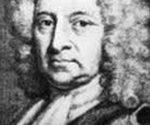Major study says malaria reinfection creates special immune cells

In a groundbreaking discovery that could reshape our understanding of the immune system and pave the way for revolutionary new vaccines and drugs, scientists have characterised a previously less-understood immune cell with powerful regulatory functions.
They have found that immune cells called TR1 cells play a dominant role in mounting an immune response to malaria. The implications of the study, published in the journal Science Immunologyon April 25, are far-reaching, potentially opening new pathways to conquer not only malaria but many other ‘difficult’ infections for which we currently lack effective vaccines.

Lines of defence
The human immune system has a complex multi-layered defence against infections. Its arsenal of weapons includes numerous components and subcomponents with precisely defined tasks to execute. They must also coordinate with each other to ensure the response is effective and minimises self-harm.
When an infectious agent breaches the first layers of defence (skin and mucosae), specialised arms of the immune system respond. The first among them is innate immunity: it acts against any threat non-specifically, while activating other arms of the system, which are collectively called adaptive immunity.
In addition to acting against a threat, adaptive immunity stores a record of the molecular signature of the threat, or antigen, with help from the memory cells. Every antigen has specific memory cells. When they recognise an antigen they’ve encountered before, they accelerate and enhance the immune response.
This adaptive immunity has two important subcomponents. Antibody-mediated humoral immunity is mediated chiefly by B-cells while cell-mediated immunity involves the T-cells.
The real heroes
The new study, led by Jason Nideffer of Stanford University, focused on a subtype of T-cells called CD4+ cells. They are also called helper cells because they help activate B-cells, T-cells, and immune cells like macrophages during an immune response.
The team examined helper cells in children and adults who have suffered malaria multiple times. One subset of helper cells are the type-1 regulatory T-cells, or TR1 cells. Another subset of helper cells are the TH1 cells.
The study was conducted in eastern Uganda, where the malaria parasite Plasmodium falciparum (Pf for short) is perennially transmitted. Ugandan children under 5 years of age often suffer three to five episodes of malaria every year. After multiple episodes, they become clinically immune by about 10 years of age: i.e., they don’t develop symptoms despite getting infected by Pf again.
The researchers have surmised that Pf-specific helper cells play a crucial role in developing this clinical immunity.
Specifically, for many years, malaria textbooks said that the human body responded to a Pf infection by mounting a ‘classic’ immune response mediated by CD4+ TH1 cells. But by sequencing more than 500,000 single CD4⁺ T-cells and tracking their genetic barcodes, the researchers found that TR1 cells are the real heroes. While they make up only around 3% of resting CD4⁺ cells, they account for almost 90 % of all Pf-specific helper cells.
This forces us to rethink what an effective anti-malarial T-cell response looks like.
Technique that turned tables
The research team took advantage of an ongoing three-year study called Malaria in Uganda Systems Biology and Computational Approaches study (MUSICAL). The study is trying to understand malaria in Uganda using advanced systems biology and computational approaches. Investigators follow the participants with regular surveillance, including blood smear, quantitative PCR tests, peripheral blood mononuclear cell sampling.
In the new study, the researchers tracked helper-cell clones through multiple infections in humans to assess their long-term stability and the efficiency with which they could facilitate an immune response inside the body over hundreds of days. (Helper cells that respond to the same antigen are said to be clones of each other.)
A health worker prepares a malaria vaccination. The World Health Organisation endorsed the use of the malaria vaccine Mosquirix on children aged five months to five years in October 2021.
| Photo Credit:
AFP
The first unique feature of the study was its longitudinal nature. All previous studies on the subject have been cross-sectional, i.e. studying a population at one point in time. Longitudinal studies are more challenging since they require repeated biological sampling, active case-finding, and long-term follow-ups of participants.
The researchers used an advanced technique called single-cell RNA and T-cell receptor (TCR) sequencing to track the relative proliferation of different CD4+ T-cell clonotypes (clones derived from the same ancestor cell), their changes afterwards, and whether they multiplied in the same ways after every infection. Together, these data connote the cells’ memory potential (how well they remember) and clonal fidelity (how well they make copies of themselves).
This was the second unique feature of this study. Previous studies on the CD4+ T-cell response to malaria were based on characterising them using enzyme-linked immunosorbent spot assays or flow cytometry-based approaches, which have many inherent limitations. As a result, researchers have thus far had trouble confirming whether the TR1 cells induced by malaria were a bona fide class of helper cells distinct from other TH1 cells.

Follow the barcode
By sequencing memory CD4+ T-cells before, during, and multiple times after repeated episodes of malaria, the researchers acquired an unbiased picture of CD4+ T-cells’ memory in the body. To perform its specific functions, each cell needs specific proteins. The sequencing technique reveals which proteins a cell is making. Call it a genetic barcode that the sequencing reads to reveal the cell’s current state.
The team found that nearly all clonotypes displayed a strong preference for one of seven subsets of CD4+ T-cells. This finding was made possible by the team’s use of single-cell genomics in vivo. Perhaps the biggest finding was that the TR1 cells also displayed high average clonal fidelity. The study also identified TR1 cells as the dominant CD4+ T-cell subset induced after paediatric malaria and that they are capable of long-term memory with clonal fidelity upon reinfection.
Sequence samples in the same individuals also revealed many clonotypes at multiple time points that retained their fidelity for hundreds of days.
The researchers used each T-cell’s barcode TCR sequence to keep track of ‘who was who’ as the cells went from a calm, resting state to a revved-up, activated state. The technique let them see — without any guess-work — which genes flipped on universally and which flipped on only in, say, TR1 cells. It revealed the presence of fresh subset-specific genes. It also showed that while helper cells ‘shouted’ by expressing the TNF and IL-2 genes, regulator cells hit the brakes by expressing the FAS gene.
The researchers also conducted another test that likened the seven CD4⁺ T-cells subsets to an army with seven regiments. When they blew a loud horn, every soldier charged forward. But when they waved a specific enemy flag — in this case, Pf-infected red blood cells — only one regiment, the TR1 peacekeepers, stepped forward.
These TR1 troops are normally a small minority yet almost all malaria-recognising T-cell badges belonged to them. In other words, people who have never fought malaria don’t have that regiment, so nothing much happens when their cells see the specific flag. In sum., the researchers were able to verify that TR1 cells mounted a focused, antigen-specific response to blood-stage malaria and not a broad, nonspecific reaction.
With longitudinal follow-ups, researchers found that TR1 cells’ abundance increased with every infection — even when the second infection occurred hundreds of days from the first — and more than tripled after a few infections. The abundance also correlated with the frequency of Pf parasites in the blood, suggesting that the TR1 cell response depends on the antigen load.
Although the abundance also dropped a bit from the peak once an individual recovered from an infection, it still maintained higher baseline levels in clinically immune individuals.
In fact, even though a subset of helper cells called TH1 cells also clonally expanded after a symptomatic infection, they didn’t expand upon reinfection — whereas the TR1 helper cells did. This suggested that the TH1 cells are likely not Pf-specific and that their expansion after the first infection was unrelated to the infection being malaria. The finding is important because it almost completely negates a suggestion from previous studies that malaria primarily induces a TH1 response.
The researchers also found some preliminary evidence to suggest that the TR1 cell response is encoded epigenetically, meaning the response is controlled in a way that is independent of the genes. Gene-expression studies of TR1 cells showed that there are distinct subgroups of these cells: naïve-like TR1 cells, effector TR1 cells and memory TR1 cells. The expansion and contraction of these subpopulations during and after symptomatic infections proved that these are functionally distinct entities and validated the memory potential of individual Pf-specific TR1 clones.

Tuning the immune system
These insights into the immune response against malaria are likely to be game-changers: in approaches to prevent or manage malaria infections as well as in terms of opening new avenues to interrogate certain diseases and how our bodies respond to them.
For example, by proving that TR1 cells are the ones to follow during a malaria reinfection, the study offers new ways to develop effective vaccines against malaria.
If TR1 cells take centrestage, and given how they work, they may be helping the body carry Pf parasites without falling severely ill. Their specific role also opens the door to host-directed therapies, i.e. improving treatment outcomes by ‘tuning’ the immune system rather than targeting the pathogen itself.
The findings may also open new avenues of research into the immunology of other infectious diseases and new ways to conquer them.
Puneet Kumar is a clinician, Kumar Child Clinic, New Delhi.
Published – May 29, 2025 05:30 am IST















